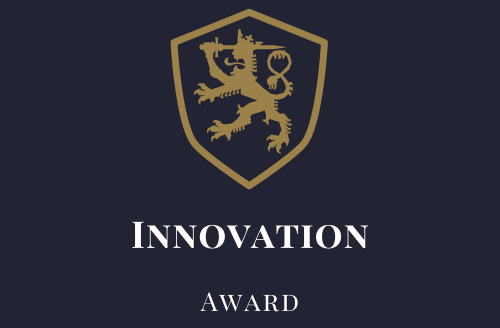Are you always looking to stay ahead of the curve? Are you interested in discovering the latest trends and innovations? If so, then this blog post is for you! Here, we’ll explore some of the most exciting new developments in technology, fashion, and more.
Introduction to AI Everywhere
In this blog series, we have examined the societal and political aspects of developing artificial intelligence technologies, and given an executive guide to AI, from machine learning and general AI to neural networks. As we continue to explore the current trends and innovations in the AI field, it is important to understand how AI is becoming increasingly integrated into everyday life.
From digital twins and blockchain to the impact of the Internet of Things (IoT) on business goals, AI is everywhere. We have seen how this technology can unlock opportunities and help business leaders adapt to the Coronavirus (COVID-19) outbreak. In this section, we will look at the broader implications of AI Everywhere, and what it means for society.
Digital Twins and Blockchain Redesigning Trust
The use of digital twins and blockchain technology is one of the most popular trends in modern business. Digital twins allow businesses to store and analyze data in real-time, while blockchain technology ensures transparency and trust in the execution of automated transactions. This combination of technologies has the potential to revolutionize the way businesses operate and can help to create an equitable, interoperable, and secure environment for data management.
Furthermore, Deloitte’s Tech Trends Report suggests that blockchain can be used to redesign trust in business transactions. Companies are also exploring technical profiles of emerging technologies as part of their overall strategy for gaining competitive advantage. As such, businesses must adapt to the latest trends and innovations in order to unlock new opportunities and stay ahead of the competition.
The Impact of Internet of Things (IoT)
The Internet of Things (IoT) has become an integral part of digital transformation, impacting businesses of all sizes in a variety of ways.
Companies have the opportunity to gain access to real-time data, automate processes, and improve operational efficiencies. For instance, IoT devices can generate data feeds that can be used to train AI models and enable predictive analytics. Additionally, IoT can enable the use of digital twins and blockchain technology to create trust between connected devices and applications.
Furthermore, the coronavirus pandemic has forced companies to adopt new technologies such as 5G networks as well as video conferencing platforms to enable remote working environments. As a result, IoT can help businesses to leverage these technologies and quickly respond to dynamic market conditions.
Deloitte’s Tech Trends Report
Deloitte’s 14th annual Tech Trends report offers valuable insight into the rapidly changing technology landscape. It explores the impact and opportunities of emerging technologies in both innovation and foundational areas, as well as the continued evolution of foundational IT forces and other technology areas expected to help drive growth.
The report dives into the opportunities presented by artificial intelligence, digital twins, blockchain, the Internet of Things, and more. It also examines how companies can use these technologies to drive their digital transformation strategies and unlock new opportunities for growth.
Furthermore, it looks at how the Coronavirus (COVID-19) pandemic has impacted technology trends, and how businesses can adjust their strategies to stay competitive in a rapidly evolving environment. With this comprehensive analysis, Deloitte’s Tech Trends Report provides invaluable insight into how businesses can use technology to stay ahead of the curve.
Strategic Technology Trends Impacting Business Goals
In the previous sections, we’ve explored transformative technologies such as AI, IoT, digital twins, and blockchain. Now let’s look at the strategic technology trends that are impacting business goals.
According to Gartner’s Top 10 Strategic Technology Trends for 2023, these trends focus on enabling business model change, reinventing engagement with employees and customers, and accelerating strategies to tap into new sources of growth. These tech trends are generally accelerating the primary characteristics that have defined the digital era: granularity, speed, and scale.
Additionally, they are driving businesses to rethink how they use technology to create competitive advantage. Leveraging these trends can help businesses stay ahead of the competition while also meeting customer needs.
Exploring the Technical Profiles of Emerging Technologies
Exploring the technical profiles of emerging technologies is essential in order to take full advantage of their potential and better understand the opportunities they present. With the ever-changing landscape of technology, it is important to stay ahead of the curve and gain a comprehensive understanding of the latest trends and innovations.
AI Everywhere, Digital Twins, Blockchain and IoT are all emerging technologies that are completely reshaping how businesses operate. For example, AI Everywhere is driving automation and innovation by enabling machines to think like humans and make decisions in real-time.
Digital Twins are redefining trust by creating digital replicas of physical objects to improve collaboration between teams. Blockchain is offering new ways to store and secure data, while IoT is providing new data collection and analysis capabilities. With these advancements in technology, businesses can unlock new opportunities while balancing their current priorities.
Unlocking Opportunities with Emerging Technologies
Business leaders are increasingly recognizing the potential of emerging technologies such as AI, blockchain, IoT, and digital twins to unlock opportunities and create value. When it comes to unlocking these opportunities, leveraging the right technical profiles is essential.
For instance, AI technology can be used to automate processes, increase efficiency, and improve decision-making. Similarly, blockchain technology can be used to create secure digital ledgers and decentralized networks that enable trust and transparency. IoT technology can be used to create connected devices that generate large amounts of data for analysis.
And digital twins can be used to create virtual replicas of physical systems that can be manipulated in a simulated environment. By leveraging these technologies in the right way, business leaders can capitalize on the potential of emerging technologies to create value and gain a competitive edge.
Adapting to the Coronavirus (COVID-19) Outbreak
The coronavirus (COVID-19) pandemic has presented unprecedented challenges to healthcare systems worldwide. As businesses and organizations adjust to the new normal, many have had to rapidly innovate and adopt new technologies.
From digital twins and blockchain to the Internet of Things (IoT), AI Everywhere, and more, there are a range of emerging technologies that can help businesses adapt and respond to the changing landscape. By leveraging these technologies, businesses can unlock opportunities to stay ahead of the curve in a rapidly changing environment.
Strategic technology trends such as those outlined in Deloitte’s Tech Trends Report can also provide insights into successful strategies for adapting to the pandemic. Finally, business leaders should consider how they can use their technical skillsets to strategically respond to the outbreak and help ensure a successful transition in both the short-term and long-term.
Technological Responses to the Outbreak
In response to the ongoing coronavirus (COVID-19) outbreak, businesses have embraced innovative technological solutions to help ensure safety for their employees and customers. Artificial intelligence (AI) has been used to help identify new cases of the virus, predict potential future outbreaks, monitor social distancing, and develop vaccines.
Digital twins have also been used to model and simulate the spread of the virus and inform decision-making processes. Blockchain has been used to track and trace the virus, as well as provide secure access to medical records. The internet of things (IoT) has been used to automate manual processes and enable remote working.
All of these technologies combined can help businesses better address the challenges presented by COVID-19 and operate in a more agile manner going forward.
What Can Business Leaders Do?
Business leaders have an important role to play in the adoption of emerging technologies and the strategic application of digital technologies. One of the most important things they can do is to ensure their organizations have the right skills and resources to use them effectively.
They should also strive to create a culture of innovation and agility, ensure appropriate investments are made in research and development, and promote cross-functional collaborations between teams. Additionally, leaders should stay informed on the latest technology trends and be prepared to implement strategies that leverage those trends to remain competitive.
Finally, they should prioritize developing a customer-centric approach, understanding customer needs and expectations, and building a customer experience that meets those needs. By doing so, business leaders can help their organizations stay ahead of the competition in the ever-evolving digital landscape.
Trends And Innovations
As we have seen, emerging technologies have the potential to revolutionize the way we live and work. From AI Everywhere to digital twins and blockchain, these technologies are helping to redefine trust and create new opportunities. IoT has enabled us to better understand the world around us, while Deloitte’s Tech Trends Report has provided a roadmap for businesses to make the most of these developments.
As the coronavirus outbreak continues to dominate global headlines, these trends are also helping organizations adapt and respond in an ever-changing landscape. Ultimately, business leaders must be aware of the implications of emerging technologies and how they can be leveraged to ensure long-term success. By staying informed and taking proactive steps, companies can put themselves in a position to embrace innovation and unlock opportunities for growth.




